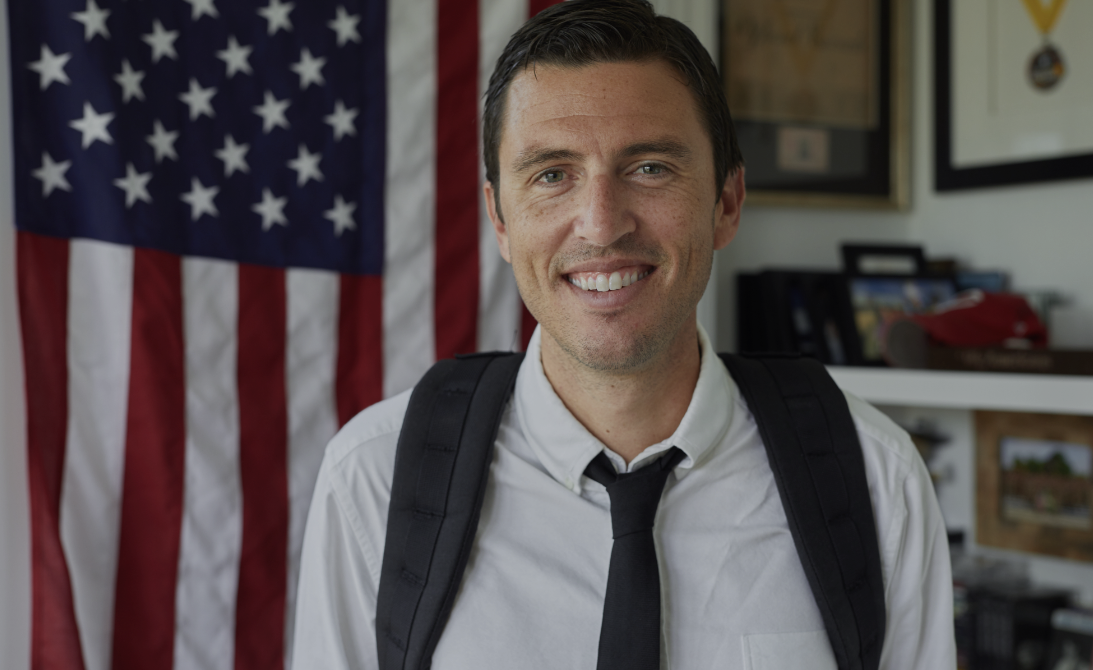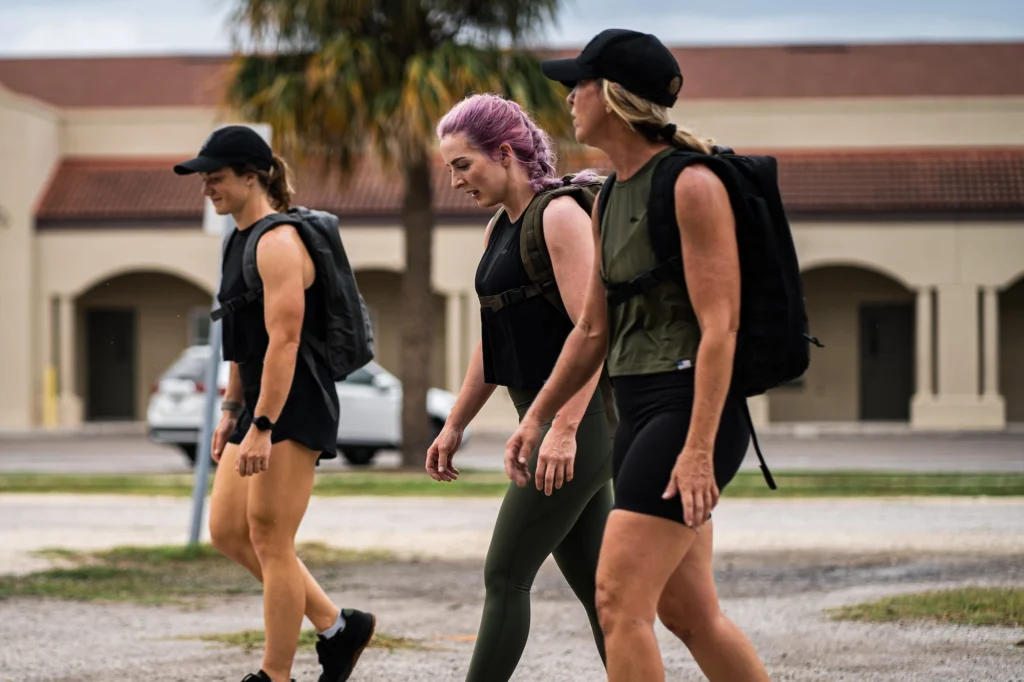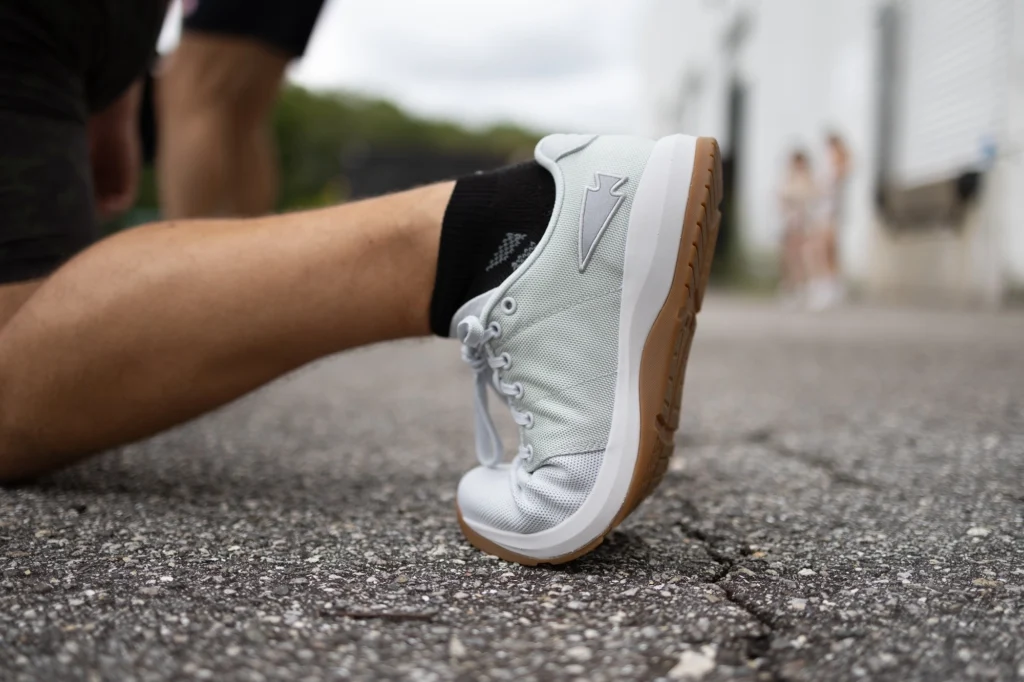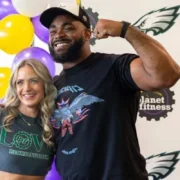CEO Corner: Goruck’s Jason McCarthy on the Rucking Revolution

McCarthy believes rucking — the sport of walking or hiking with a weighted backpack — will become bigger than running. His brand Goruck is leading that charge
Jason McCarthy created Goruck back in 2008 thanks to a nudge from his wife, Emily, who was stationed in West Africa while working as a CIA agent but saw the mass-market appeal for high-quality, fashionable rucksacks.
McCarthy, a U.S. Army Green Beret at the time, got to work creating a rucksack that could withstand life in war-torn parts of the globe while also handling its own in the streets of New York City.
In the 16 years since, Goruck has become one of the hottest brands in sportswear, recently inking a deal to become the official footwear and apparel partner for CrossFit, a spot that was previously held by the likes of Reebok and Nobull.
While the company McCarthy founded stays true to its rucking roots with rucksacks and ruck plates that meet the demands of the Special Forces, Goruck’s product line has evolved to include a variety of training apparel and footwear for men and women.
McCarthy spoke with Athletech News about Goruck’s humble beginnings, its community-driven growth and how the brand stays true to its Military roots while attracting consumers from all walks of life.
This conversation has been lightly edited for clarity and length.
Athletech News: Can you tell us a bit about your background and why you decided to create Goruck back in 2008?
Jason McCarthy: I joined the Army because of 9/11. I made it through a couple of years of training to earn my Green Beret, so I joined Special Forces. The revenge that inspired my joining the army morphed into a love of the guy to my left and my right, a love of service to others and a love for my country.
I’d built my wife, who was serving in the CIA at the time, a go-bag, or a “Goruck,” something we would put in the trunk of the Humvee with extra supplies – batteries, bombs, guns, bullets, water – the stuff that you would need in case your vehicle was disabled and you needed to fight.
I asked myself, “What am I going to do after the army?” and my wife said, “You should do the Goruck thing.” Two and a half years or so later, there was finally a working prototype of our first rucksack. It was Army Special Forces standard stuff, but it was also meant to thrive in New York as well as Baghdad. I poured all of my deployment money and my wife’s deployment money into the business, building up inventory and stuff that (initially) nobody wanted to buy.
ATN: How did you grow Goruck’s client base in those early days?
JM: I came up with an event called the Goruck Challenge. It was, “Meet me on the street corner at 1am, details not forthcoming, it’s a team event.” It turned into Fight Club with backpacks, which was how we made a name for ourselves. After that, we started running more and more events. That became the foundation of Goruck, bringing people together with rucks on and doing hard stuff. And then at the end, I’ll buy you a nice cold beer.

ATN: What role has Goruck played in the evolution of the broader rucking community since you founded the brand?
JM: We’re living the life. I’m training for a 50-miler right now. The greatest force that I’m fighting against, deep inside of my soul, is this dystopian nightmare represented by the Metaverse. This idea of people in our country staring into their phones hoping for a better life, or not even hoping for a better life, just not even thinking about it. The more we do that collectively, I think the worse off and the more divided we are. So instead of just saying how bad that is, let’s do the things we love and tell people about what we’re doing. We happen to love rucking and organizing people to come together and work out.
ATN: Goruck’s products are now used by people involved in all kinds of fitness and general life activities. Why does the brand’s appeal extend beyond the rucking world?
JM: We’ve been building our stuff from the ground up for 16 years. We started out with rucks and then ruck plates – the weight that you put in the rucks – and then moved into apparel and footwear. It’s all applying the same philosophy with a small core of people who have a commitment to the relentless pursuit of excellence across anything that we build or do. The problems that we’re solving for – active people that are on the move, that put a lot of stress on their bodies and that want stuff to last – I think that will naturally break outside of just rucking. If you want to walk around a city all day, you’re going to put a lot of stress on your feet. Our footwear is going to be perfect for that.

ATN: Goruck recently became the official footwear and apparel partner of CrossFit. How did that deal come about and why does it make sense for the brand?
JM: At our core, both brands are deeply committed to the social connections that happen through physical fitness because we saw it in the military. Don Faul, the CrossFit CEO, for example, came up through the Marines.
(New) products will come. But part of the reason the partnership worked is because we already had a lot of stuff that was built, specifically our footwear. We designed our Ballistic Trainers as training shoes because we do a ton of sandbag work with a ruck on, which happens to be the same kind of strain on your feet as pushing a barbell above your head. We’ll also design more apparel, specifically a lot more apparel for women that meets their standards. We’re working with some of the best in the business.
ATN: Speaking of CrossFit, you just signed Tia-Clair Toomey, a six-time CrossFit Games champion, to be the face of Goruck’s training footwear and women’s apparel lines. Why is Tia the right choice as a face of Goruck?
JM: We’ve known Tia for a long time, and I’ve been very inspired and impressed by her as a person. That matters to us. We have a “No Asshole Rule” – we don’t like to work with people who are not our people because life is too short.
The blessing that matters most to me is our good standing within the Special Forces community. If we didn’t have that I would make that right or go do something else in my life. So the challenge for us is, how do we find athletes that can fit in that realm? I wanted to make sure that that person could carry the Goruck brand as a female. Tia can do that just by being herself. She happens to be really good at CrossFit as well. It’s the biggest partnership with an athlete that we’ve had, and we’re really proud that it’s with her.

ATN: Looking ahead, what are your short and long-term goals for Goruck?
JM: We’ve never taken any outside funding – my stepdad wrote me a check early on for some inventory, that’s the extent of the cash that we’ve taken. I look at companies like Patagonia that have come up and stayed true to a vision, however much you believe or support that vision, they stand for something, they didn’t sell out to some big brand and they still have their own voice. I’m inspired by that much freedom to keep charting our path our way.
We’re driving the fitness category of rucking up to where I think it will become bigger than running.
ATN: That’s a big statement. Why are you so confident in the future of rucking?
JM: The number one reason is because it’s better for more people. I think running is great. The problem with running is multifold, though. The rate of injury is high – it’s the number one cause of injury in special forces. The load onto your body per strike is eight times your body weight. When walking it’s 2.7, and when rucking, it’s your body weight plus the weight of the ruck times 2.7. It’s fractional in terms of the (additional) load or the taxation on your body. If you can walk, you can ruck. And it’s completely scalable – 10 pounds is rucking and 100 pounds is rucking.
Everyone is fitness-shamed into thinking they should run. If we can shift the mindset and say, “Hey, you just need to go outside and be more active,” what people will probably find is that walking isn’t exciting enough, there’s not enough of a challenge. To that, I proudly give you rucking.



